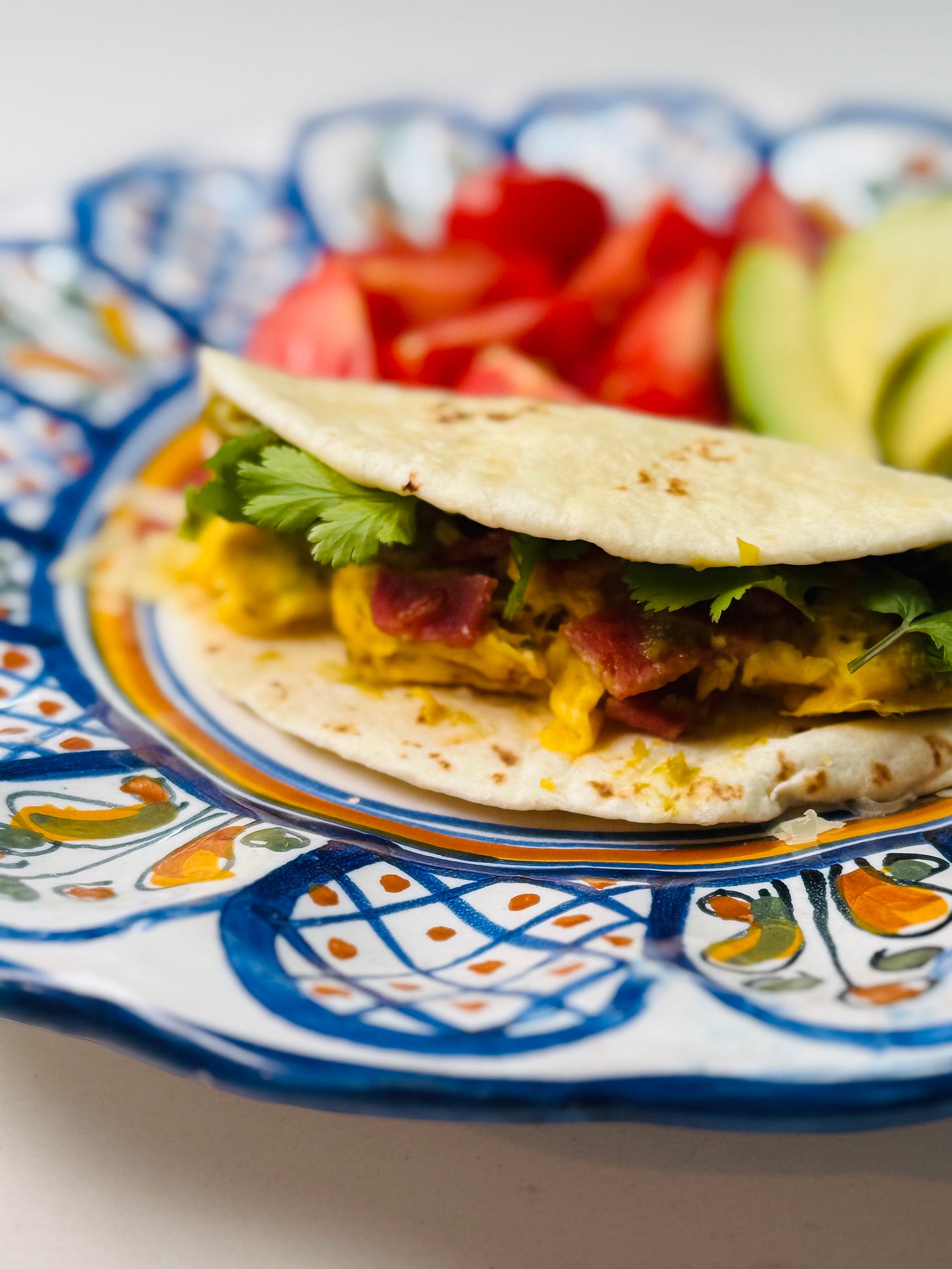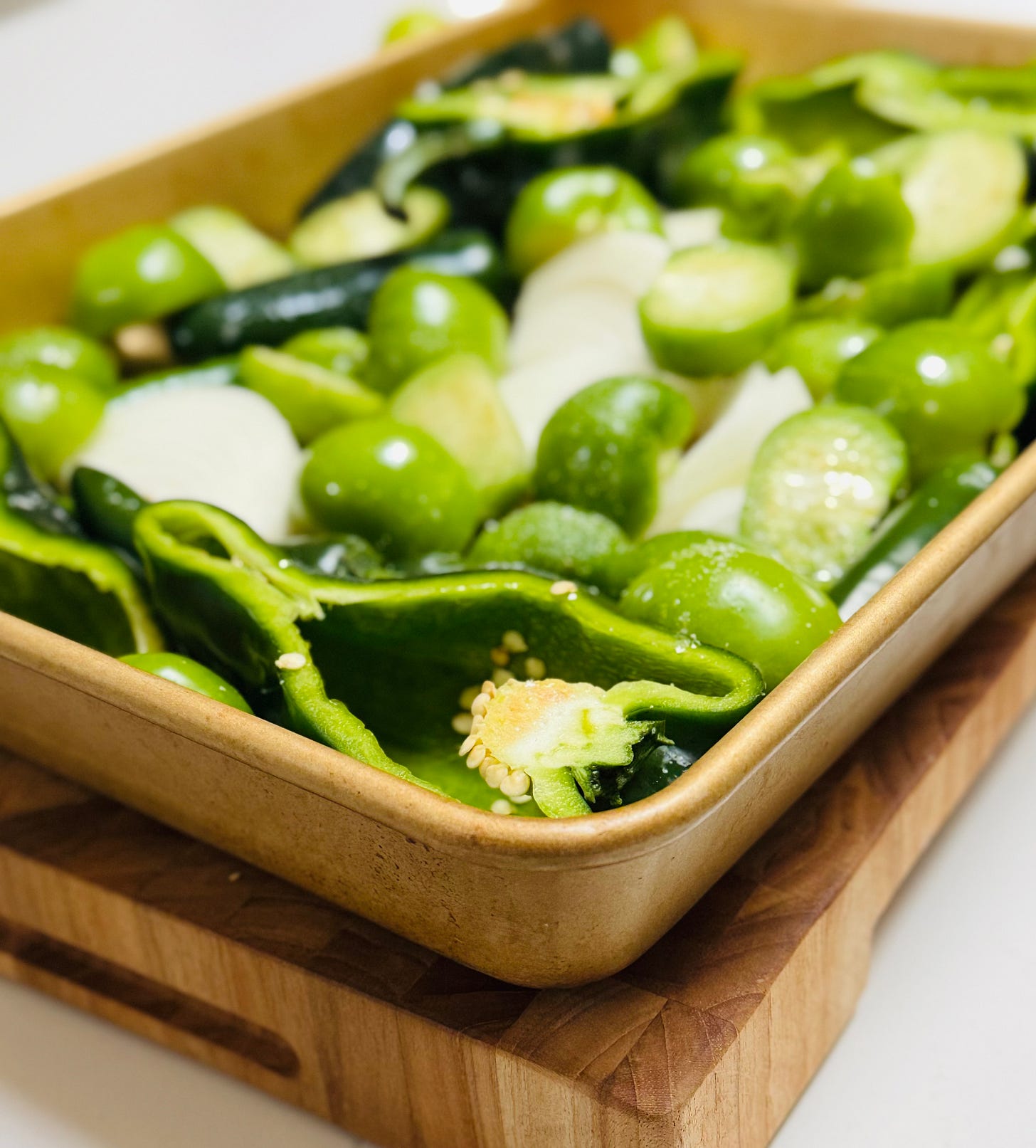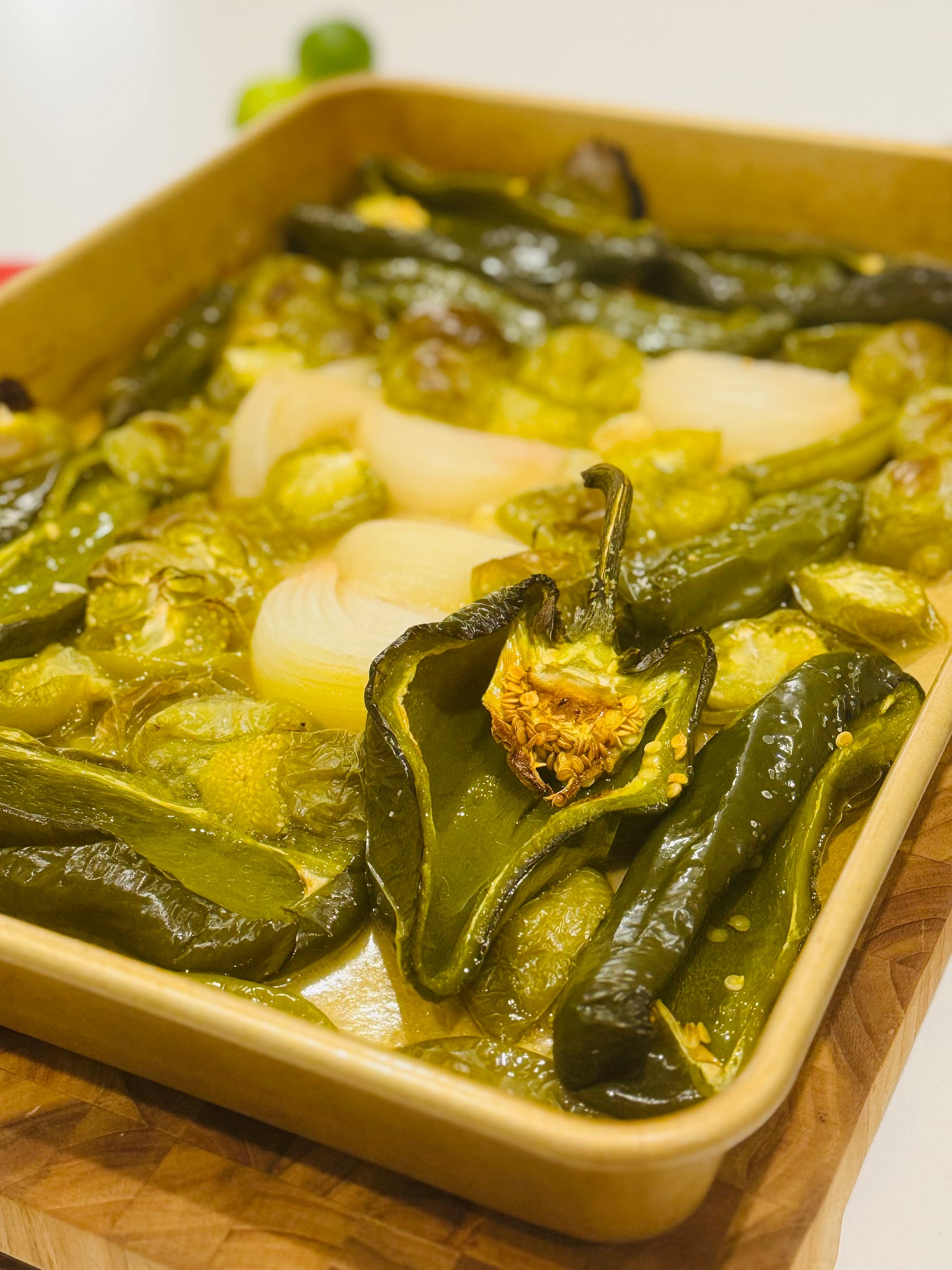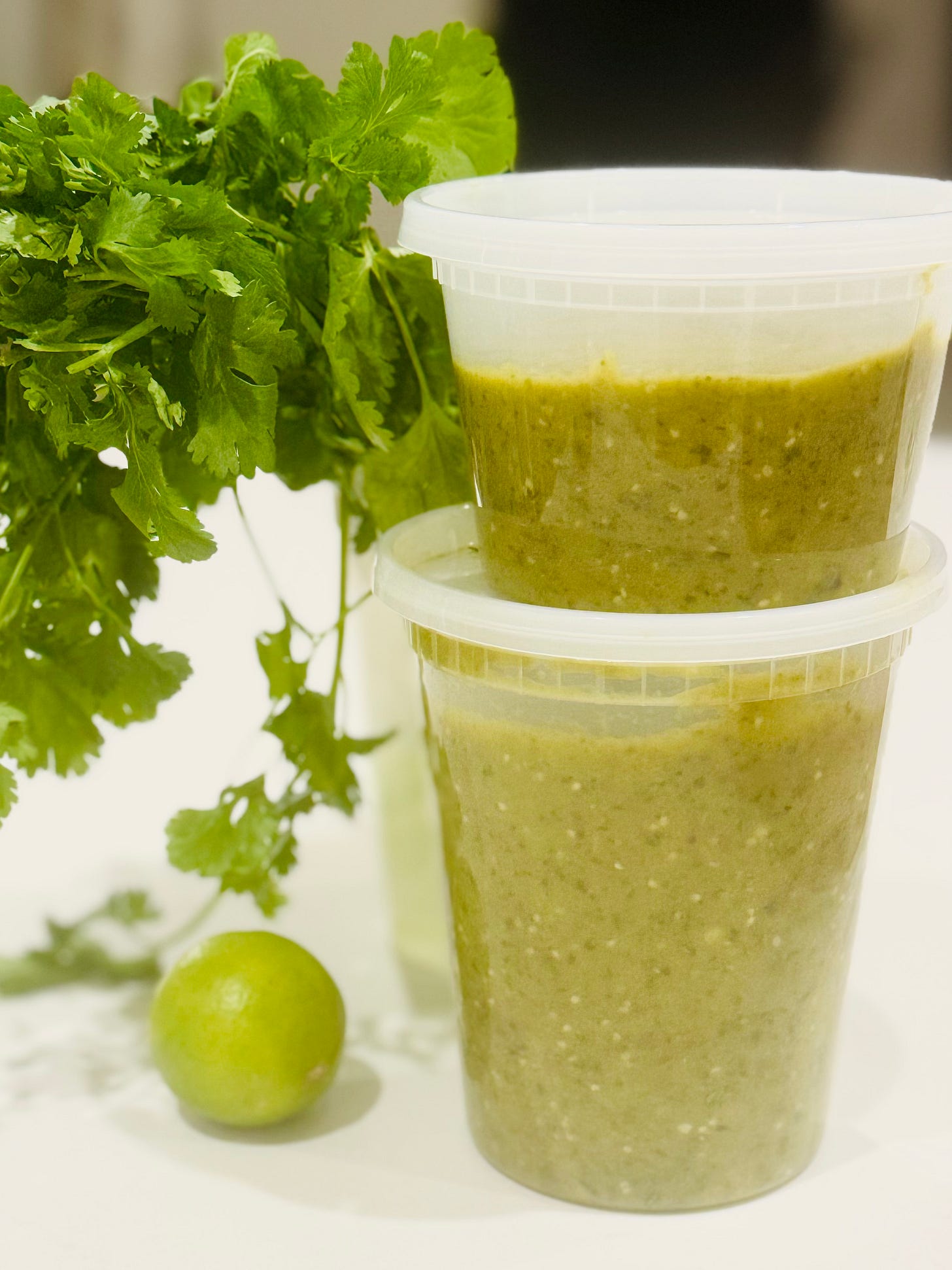IN THE FOLD
I've been wondering about the difference between a breakfast taco and a breakfast burrito. Tortillas and a must-hav condiment are major players. Thanks for your readership and dedication to breakfast.
Breakfast burritos reign supreme here in New Mexico. Walk into any restaurant, coffeeshop or convenience store and there’s bound to be a breakfast burrito on offer.
But in Texas, our neighbor to the east, breakfast tacos are the big deal breakfast thing.
I run the risk of being labeled a traitor for even thinking about breakfast tacos in New Mexico, much less eating them. There’s a bit of a rivalry between our two states. You know how New Yorkers like to make fun of New Jersey, and how North and South Dakota love to hate each other? Well, that’s the vibe between New Mexicans and Texans.
Texans think that they are better because they are bigger. We New Mexicans know the truth. Size doesn’t always matter.
All I know is, starting the day with a warm flour tortilla filled with scrambled eggs and sauteed vegetables or crumbled bacon and melted cheese, never gets old. In one place it will be balled a burrito. In another a taco.
At this point, you may be pondering the difference between a breakfast taco and a breakfast burrito. Or maybe you’re a newbie to southwestern cuisine, someone who’s never had either.
Well, here’s the difference. It’s so simple and subtle that it’s huge.
It comes down to the tortilla.
This is where size matters.
And the fold. It’s all in the fold.
A breakfast burrito is made with a dinner plate sized tortilla. If you’ve ever swaddled a baby, then you know how to construct a breakfast burrito. The goal is to encase the filling with the tortilla so that what you’re left with is a bundle of pillowy scrambled eggs, melted cheese and maybe some crispy bacon or sausage.
First you have to warm the tortilla and place the cooked ingredients on top of the tortilla. Next you fold the ends inwards. Then you scrunch the fillings towards the bottom as you fold the bottom up to cover the filling. Then it’s roll, baby, roll.
On the other hand, a breakfast taco is made with a smaller, bread-and-butter plate sized tortilla, about 5 inches in diameter. There’s no swaddling called for here since the tortilla is too small to roll. The warm tortilla is simply folded in half after you’ve placed the filling inside in the tortilla.
And since the tortilla for the taco is smaller you can usually eat two or three depending on how hungry you are.
Lawfully, there is one ingredient, a condiment really, that must accompany breakfast tacos.
And that condiment is salsa verde.
Salsa verde takes a bit of time to prepare, but it’s mostly hands off time while the peppers and tomatillos and onions and garlic roast in the oven. If you’ve made salsa verde before then you know you will no doubt make it again, and again, and again. It’s really that good.
If you’ve never made salsa verde, consider this an open invitation to make a batch. I think you’ll become a fan.
Tomatillos are the backbone of salsa verde, those funny looking green tomato-ish looking orbs covered with a skin that kind of looks like tissue paper.
Tomatillos contain a high amount of pectin making them a perfect ingredient for this particular salsa because it is thick and sturdy. Sometimes salsa can be too runny if it has a high water content. Trust me, eating a breakfast taco or burrito for that matter with salsa dripping off your hand and down your arm is no way to start your morning. This will not be the case with this salsa verde. Don’t worry about that papery outer layer, because you’re going to remove it. Once you do, you’ll notice that the tomatillos are sticky underneath that layer. Just give them a rinse under running water and they’ll be ready to roast.
There will be plenty of salsa verde left over. And, like I said, that’s a good thing. Here at my house, I like to serve it with grilled chicken or roasted fish. It’s also really good mixed into plain yogurt for a quick dip or topping for a baked potato. And of course, it’s perfect for dunking tortilla chips or pita chips into.
This salsa verde has a definite kick to it, but there’s also a good bit of brightness from fresh lime juice and cilantro added after the vegetables have roasted. You’ll need a large baking sheet, either a blender or food processor, a chef’s knife, and about an hour of your time.
SALSA VERDE
INGREDIENTS:
15 or so medium sized tomatillos
2 or 3 large poblano peppers
5 jalapeño peppers
3 serrano peppers
½ large white onion
4 garlic cloves
2 tablespoons avocado or grapeseed oil, enough to coat the vegetables
½ teaspoon salt
Juice of 2 limes
A generous handful of cilantro
INSTRUCTIONS:
Preheat oven to 400º F
Find the largest baking sheet you own.
Peel the outer layer from the tomatillos. Place tomatillos and peppers in a colander to give them a wash under cool running water. Shake off as much excess water as possible. Then dry the produce with a paper towel or clean dish towel. If the produce is too wet they will steam rather than char in the oven.
Cut the tomatillos and poblano peppers in half and place on the baking sheet. Add the jalapeños and serranos to the baking sheet. Peel the onion and garlic cloves, cutting the onion into quarters, then add to baking sheet.
Drizzle the vegetables with the oil and sprinkle with salt.
Place the baking sheet in the oven and roast until the vegetables are soft and there is a bit of char or brownness, about 30 minutes. Your house will smell divine at this point.
Remove from the oven and let cool for about 15 minutes.
Set up your blender or food processor.
Take the peppers off the baking sheet and place onto a cutting board. Cut the stem end from the peppers. Then, use the flat, back side, of a chef’s knife to push the seeds out. You want to remove as many seeds as possible. Some are OK and add to the flavor, but too many seeds will render the salsa inedible.
Place peppers and remaining vegetables in your blender or food processor. You might need to do this in two batches depending on the size of your machine.
Process the vegetables for about 30-60 seconds, until chopped and well combined. Add the lime juice and cilantro leaves. Process for another 30 seconds.
Taste the salsa and decide if you want to add more salt, more lime juice or more cilantro.
Once the salsa is seasoned to your liking, place it in a container with a tight fitting lid.
The salsa will keep in the refrigerator for about a week.







